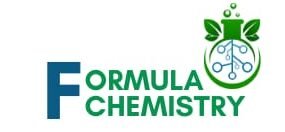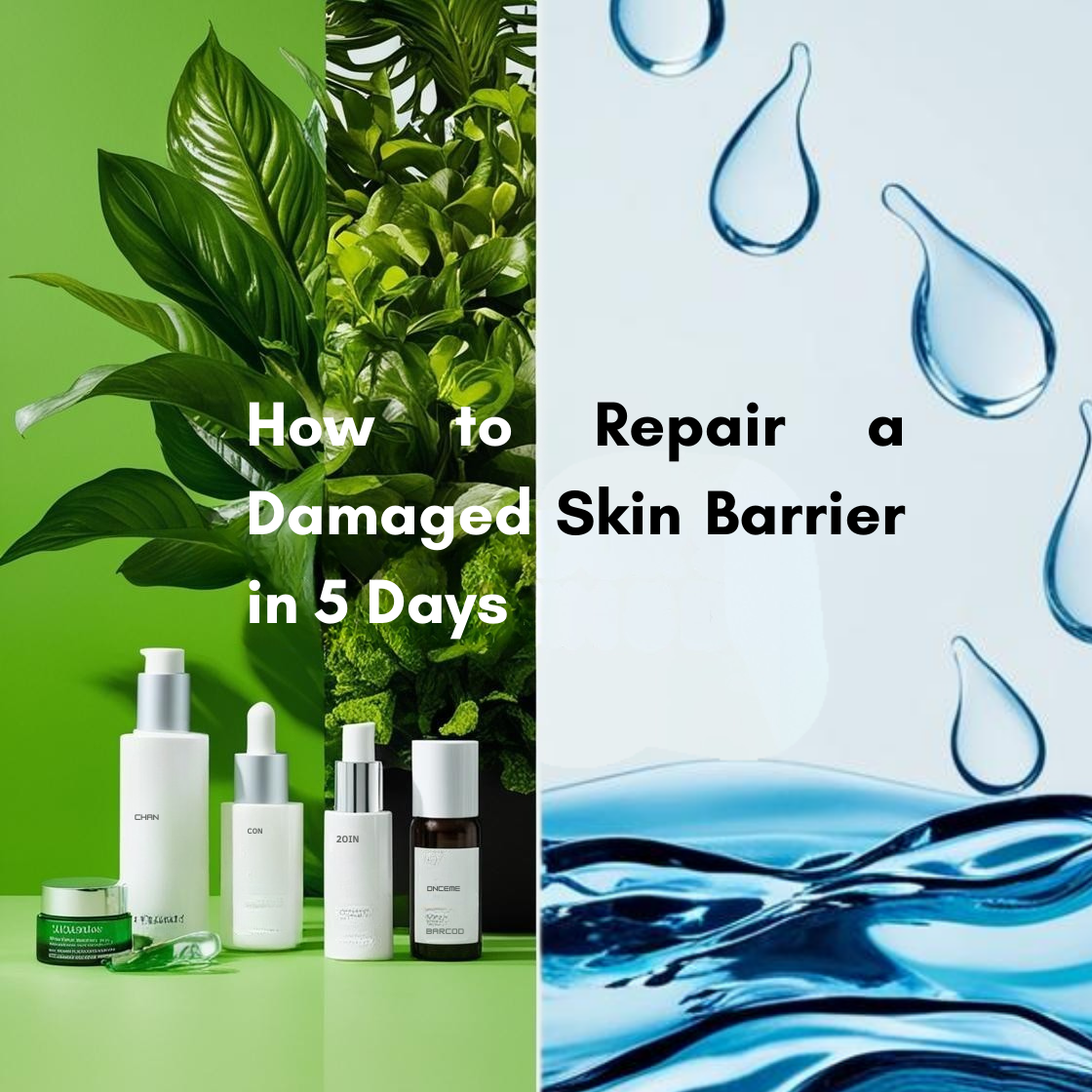Introduction
Your skin barrier is the invisible shield that protects your body from the outside world. It’s the outermost layer of your skin—also known as the stratum corneum—and it plays a crucial role in locking in moisture, keeping irritants out, and maintaining overall skin health.When your skin barrier is healthy, your skin feels soft, smooth, and resilient. But when it’s a damaged skin barrier, the protective layer weakens, leaving your skin vulnerable to external aggressors. You’ll likely notice symptoms like dryness, redness, flakiness, irritation, sensitivity, or even sudden breakouts. Everyday skincare products that once worked may suddenly sting or burn. Here’s the good news: you can start healing your damaged skin barrier in just 5 days with the right routine and ingredients. In this guide, we’ll walk you through the causes, signs, and a step-by-step recovery plan to help your skin bounce back—stronger and healthier than ever.
What Causes a Damaged Skin Barrier?
Your skin barrier can be surprisingly fragile, and there are several common culprits behind its damaged. Here’s a closer look at what might be throwing your skin off balance:
Over-Exfoliation
While exfoliating helps slough off dead skin cells and boost radiance, too much of a good thing can backfire. Using exfoliants—especially those with strong acids like AHAs or BHAs—too frequently can strip your skin of its natural oils and disturb its protective barrier, leaving it dry, raw, and reactive.
Harsh Skincare Products
Products containing alcohol, sulfates, synthetic fragrances, and essential oils may seem effective at first, but they often disrupt the skin’s pH balance and cause microdamage. This can lead to inflammation, dehydration, and a weakened barrier over time—especially for those with sensitive or acne-prone skin.
Environmental Stressors
Pollution, extreme weather (cold winds or strong UV exposure), and even indoor heating or air conditioning can erode your skin’s natural moisture barrier. These external stressors lead to increased trans-epidermal water loss (TEWL), making your skin more vulnerable to irritation, dryness, and premature aging.
Lifestyle Factors
Your daily habits play a big role in skin health. Things like:
- Poor diet (lacking essential fatty acids, vitamins, and antioxidants)
- Chronic stress (which raises cortisol, impairing skin function)
- Lack of sleep (reducing skin’s ability to repair overnight)
- Smoking or excessive alcohol consumption
Day-by-Day Skin Barrier Repair Plan
Day 1: Hit Reset
The first step in repairing a damaged skin barrier is to stop using any active ingredients that may be contributing to irritation. This includes products containing retinol, alpha hydroxy acids (AHAs), beta hydroxy acids (BHAs), or other exfoliating agents. Instead, switch to a basic skincare routine that focuses on calming and hydrating the skin. Use a gentle, pH-balanced cleanser that does not strip the skin’s natural oils. Follow up with a plain, fragrance-free moisturizer designed for sensitive skin. You can also introduce a hydrating mist or essence that contains ingredients like glycerin or aloe vera to soothe and support initial healing.
Day 2: Hydration & Protection
Once your skin begins to calm, the next focus should be hydration and barrier reinforcement. Introduce a hyaluronic acid serum to draw moisture into the skin and help maintain optimal hydration levels. Choose a moisturizer that is rich in ceramides to replenish the skin’s natural lipids. Look for barrier-repair creams that include ingredients like niacinamide, which helps reduce inflammation and support elasticity, or panthenol, which promotes healing and hydration. Applying products while your skin is still slightly damp can improve absorption and enhance their effects.
Day 3: Lock In Moisture
By the third day, your skin will benefit from deeper moisture retention. Begin layering your skincare in the correct order: start with a hydrating toner, followed by a serum, then a rich moisturizer, and finish with an occlusive balm or facial oil if your skin is very dry. This method helps seal in hydration and prevents trans-epidermal water loss. Try to avoid wearing makeup during this phase, as many cosmetic products can be irritating. Additionally, reduce your cleansing routine to once a day—preferably at night—and simply rinse with water in the morning to avoid further disruption.
Day 4: Strengthen & Soothe
On day four, your skin should begin to feel more stable. Now is the time to focus on strengthening and soothing with restorative ingredients. Incorporate squalane oil, a lightweight, non-comedogenic lipid that mimics the skin’s natural sebum. This helps replenish lost moisture and restore balance. Look for products containing centella asiatica or madecassoside, known for their anti-inflammatory and healing properties. You can also consider adding a probiotic-based product to help rebalance the skin’s microbiome, which plays a critical role in skin immunity and barrier function.
Day 5: Daily Maintenance
By day five, your skin should be noticeably calmer, less reactive, and better hydrated. At this stage, it’s important to stick with the simplified, barrier-friendly routine that you’ve built over the past few days. If you haven’t yet, reintroduce a broad-spectrum sunscreen with SPF 30 or higher, as UV protection is essential for both healing and preventing further barrier damage. Continue using gentle, hydrating products and avoid the temptation to add multiple new items to your routine. Consistency, patience, and simplicity are key to maintaining a strong, resilient skin barrier.
Ingredients to Look For (and Avoid)
When dealing with a compromised skin barrier, the right ingredients can significantly accelerate healing, while the wrong ones can worsen the condition. It’s important to understand what your skin truly needs during the recovery phase.
Ingredients to Look For
Ceramides are essential for restoring the skin’s natural barrier, as they help rebuild the lipid layer that protects against moisture loss. Niacinamide, or vitamin B3, supports skin elasticity and soothes inflammation. Hyaluronic acid acts as a powerful humectant, attracting water to the skin and maintaining hydration. Panthenol, also known as provitamin B5, offers deep hydration and has anti-inflammatory properties. Centella asiatica is widely recognized for its ability to calm irritated skin and promote healing. Squalane is a lightweight oil that moisturizes and restores without clogging pores.
Ingredients to Avoid
Avoid alcohol-based toners as they can strip the skin of its natural oils and compromise the barrier further. Fragrances—both synthetic and natural—can be irritating and sensitizing to damaged skin. Essential oils, though often labeled as “natural,” may cause inflammation or allergic reactions when the skin is vulnerable. Strong exfoliating agents such as AHAs, BHAs, and retinol should also be avoided until the skin barrier has fully recovered, as they can intensify irritation and delay healing.
Bonus Tips for Long-Term Barrier Health
While short-term fixes can help calm and restore your skin barrier, maintaining its health over the long run requires thoughtful and consistent habits. Below are key practices that can strengthen your skin and prevent future barrier damage.
Patch Test Everything
No matter how gentle or well-reviewed a product appears to be, it’s important to patch test before fully incorporating it into your skincare routine. Apply a small amount of the new product on a discreet area, such as the jawline or behind the ear, and observe for 24–48 hours. This simple precaution can help you avoid allergic reactions, irritation, or breakouts—especially when your skin barrier is already compromised.
Don’t Over-Cleanse
Cleansing is essential for removing dirt, oil, and pollutants, but over-cleansing can strip the skin of its natural oils and disrupt its pH balance. Ideally, cleanse your face once a day—preferably at night—or twice only if absolutely necessary. Use a mild, non-foaming cleanser that does not leave your skin feeling tight or dry. The goal is to cleanse without compromising your barrier’s integrity.
Stay Hydrated and Eat Omega-Rich Foods
What you put into your body has a direct impact on your skin. Drinking plenty of water helps keep skin hydrated from the inside out. Additionally, incorporating omega-3 and omega-6 fatty acids into your diet can improve your skin’s lipid barrier and enhance moisture retention. Foods like walnuts, flaxseeds, chia seeds, salmon, and avocados are excellent sources of healthy fats that support skin resilience and elasticity.
Maintain a Balanced Skincare Routine
Once your skin barrier has healed, it’s important to maintain a routine that supports its strength without overwhelming it. This means using gentle cleansers, hydrating serums, nourishing moisturizers, and sunscreen daily. Avoid frequently switching products or adding too many actives at once. Stick with what works and make changes gradually. A simple, consistent routine will always be more effective than an overly complicated one.
Conclusion
Healing a damaged skin barrier is not only possible—it’s often quicker than you might think when you approach it with intention and care. The key is to simplify your routine, remove irritants, and focus on replenishing what your skin truly needs: hydration, protection, and time to recover.
Your skin has a remarkable ability to heal itself when given the right conditions. By taking a break from harsh ingredients, choosing barrier-supportive products, and making conscious lifestyle adjustments, you can restore your skin’s natural defenses and achieve long-term health.
It’s easy to feel discouraged when your skin isn’t cooperating, but progress begins the moment you start listening to it. Be patient with your skin, respond to its signals, and give it the space to repair itself. The more you prioritize barrier health, the stronger and more radiant your skin will become over time.

